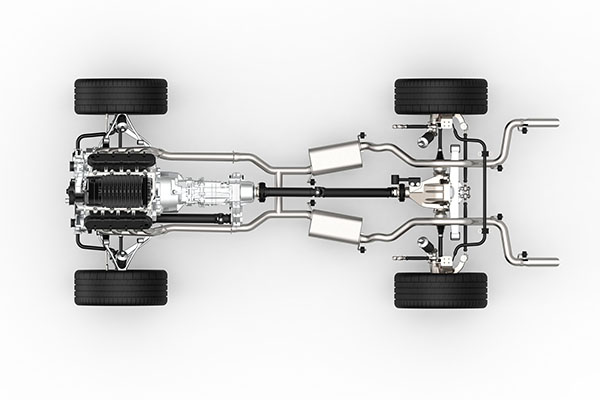
Ever heard the term "drivetrain" and wondered what wizardry lies behind it? Well, you're not alone. The drivetrain might sound like something straight out of a high-tech lab, but in reality, it's the heart and soul of your vehicle's movement.
Drivetrain Components
At its core, the drivetrain consists of components that transfer power from your vehicle's engine to its wheels, enabling it to move. This includes the transmission, driveshaft, axles, and differential. Each part plays a pivotal role in how your car accelerates, handles terrain, and overall, how it drives. Without a properly functioning drivetrain, your car is nothing more than a large, stationary metal sculpture.
Transmission
Think of the transmission as the decision-maker of your car. It decides how much power needs to go to the wheels at any given time, ensuring that your car moves at the desired speed.
Manual and automatic transmissions do the same job but in different ways. Whether you’re cruising down the highway or navigating through city traffic, the transmission ensures your car has the power it needs when it needs it.
Driveshaft & Axle
The driveshaft is like the messenger, carrying the engine's power to the wheels. In most vehicles, this long spinning tube transfers torque from the transmission to the differential. From there, the axles come into play, delivering power to the wheels.
Differential
Ever wonder how your car manages to take corners smoothly without the tires skidding or the engine stalling? You can thank the differential for that. It allows the wheels to rotate at different speeds, which is crucial for cornering. Without it, turning would be not only inefficient but also damaging to your tires and overall driving experience.
Drivetrain Configurations - FWD, RWD, AWD, & 4WD
The drivetrain configuration of a vehicle is fundamental to its handling, efficiency, and overall performance. Whether you're dealing with icy roads, tight corners, or long stretches of highway, the type of drivetrain under your car's hood plays a pivotal role. Let's explore the nuances of front-wheel drive (FWD), rear-wheel drive (RWD), all-wheel drive (AWD), and four-wheel drive (4WD) systems to understand their impact.
Front-Wheel Drive (FWD): The Efficient Performer
Vehicles with a front-wheel drive configuration direct power to the front wheels. This setup offers several advantages, especially in terms of fuel efficiency and space economy. FWD vehicles tend to be lighter, which contributes to better gas mileage.
They also provide improved traction when climbing hills and driving on slippery roads, as the engine's weight is over the driven wheels, enhancing grip. For everyday commuting, especially in urban settings or areas with mild weather conditions, FWD vehicles are a practical and economical choice.
Rear-Wheel Drive (RWD): The Driver’s Choice for Performance
Rear-wheel drive vehicles send power to the rear wheels. This configuration is often associated with sports cars and high-performance vehicles because it provides better balance and handling dynamics. RWD allows for sharper steering and acceleration, as the rear wheels push the car forward while the front wheels focus solely on steering.
However, RWD can be less effective in snowy or icy conditions, as these vehicles may struggle with traction without the weight of the engine over the driven wheels.
All-Wheel Drive (AWD): The All-Season Performer
All-wheel drive systems are designed to provide power to both the front and rear wheels as needed. AWD vehicles automatically adjust the power distribution between the wheels to optimize traction and handling, making them ideal for varying road conditions, including wet, icy, or snowy surfaces.
While AWD offers enhanced safety and performance, it can lead to slightly lower fuel efficiency due to the added weight and complexity of the system. Nevertheless, for drivers who face diverse driving conditions and seek a balance between performance and safety, AWD vehicles are an excellent choice.
Four-Wheel Drive (4WD): The Off-Road Champion
Four-wheel drive systems are similar to AWD but are typically more robust and offer higher levels of traction and power for off-road conditions. 4WD systems can often be manually engaged and disengaged, allowing drivers to switch between 2WD and 4WD modes depending on the terrain.
This feature is particularly useful for off-road adventures, where maximizing traction is critical. While 4WD vehicles are unbeatable on rugged terrains, their heavier weight and the complexity of the system can impact fuel efficiency and on-road comfort.
For extra drivetrain repairs and maintenance, contact Folsom Automotive Service LLC! We will make sure your drive is as reliable and efficient as possible.